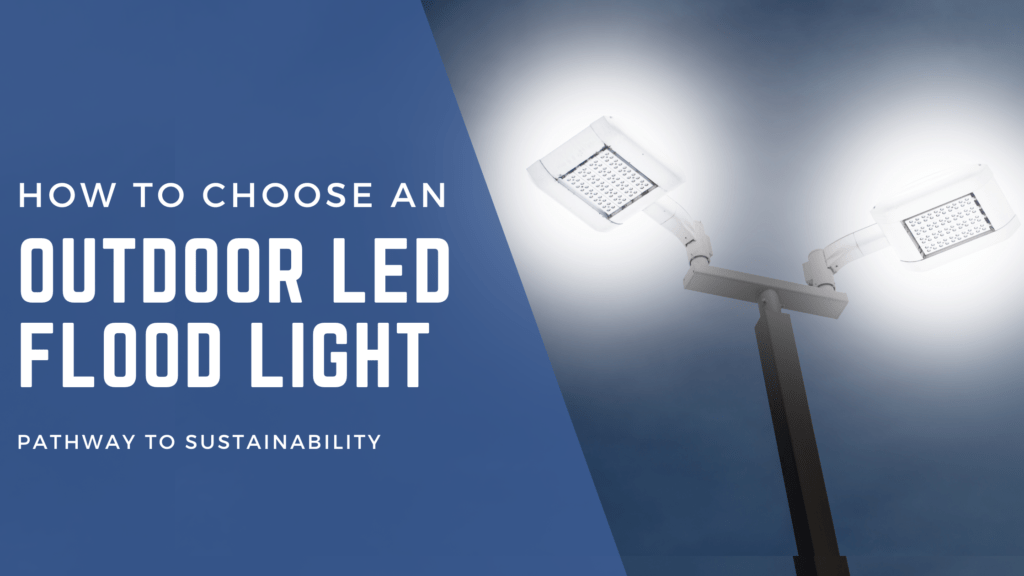LED Property Lighting
How to Choose an Outdoor LED Flood Light
LED flood lights are the perfect solution for improved property safety and security or illuminating company signage or a billboard display. Before choosing an LED flood light, what exactly is one? LED flood lights do exactly as their name suggests: they literally “flood” an area with light. This “flood” is determined by several factors, such as lumens, light distribution, mounting height and location, luminaire color temperature, and wattage.
So, let’s shine a little light on things to consider before choosing an LED flood light.
Lumens and Flood Lights
Without getting too technical, lumens are a measure of the amount of light visible to your eye from a bulb, or in this case, an LED. Simply put, more lumens mean a brighter light, and less lumens means a dimmer one. Low-lumen lights are typically found illuminating walkways, paths, and similar areas where the safety and ambience are highlighted by the lower, yet effective amount of light. For security purposes, high-lumen lighting provides safety around your property and parking areas by casting a bright light over a large area, ensuring that any would-be threats are aware they are in full sight even on the darkest of nights.
Lumen Distribution
LED flood lights come in many different shapes and sizes, but what about the pattern of light they produce? Fortunately for you, floods offer a variety of patterns – or light distribution types to help meet your lighting needs. For instance, EcoCentricNow’s Area LED Lights are available in either Type III or Type V distribution options. A Type III light is typically used along the perimeter of an area, or along a walkway or roadway, providing light along the width of the selected area. Type V LED flood lights utilize more of a 360-degree range, providing light distribution in an even pattern over the specified area of focus. You’ll find Type V lighting typically at the center of an intersection, commercial parking areas, public areas, and can be utilized in other areas of your property that require full, direct, illumination.
CCT and Flood Lights
CCT stands for Correlated Color Temperature and determines what hue of white will be visible from a light. Measured in degrees Kelvin, “warm” lights – those that appear amber, or warm white in tone are lower on the Kelvin scale (around 3000K), while “cooler” lights are higher on the Kelvin scale (5000K). So, with that bit of information, you can more appropriately select your color range of lighting depending on the type of area you need to illuminate.
LED Flood Lights and Energy Savings
One of the many benefits of utilizing flood luminaires in and around your campus, property, or business is their ability to be a more efficient and cost-effective form of lighting. They do this by producing more lumens per watt than their conventional counterparts. Simply put, an LED flood light uses less energy to produce the same number of lumens than, say, a halogen alternative.
So, the less energy used translates into energy savings for the consumer. Also, EcoCentricNow offers outdoor LED Flood lights that are DLC listed. DLC stands for Design Light Consortium. Lights that have this distinction may be eligible to qualify for energy rebates from your local utility company, adding additional savings benefit to your LED flood lighting choice.
Hopefully, this information provides you with a very solid head start in choosing a LED flood light for your business or property. At EcoCentricNow, we are confident our lighting options provide you with the functionality, reliability, and performance you need!

